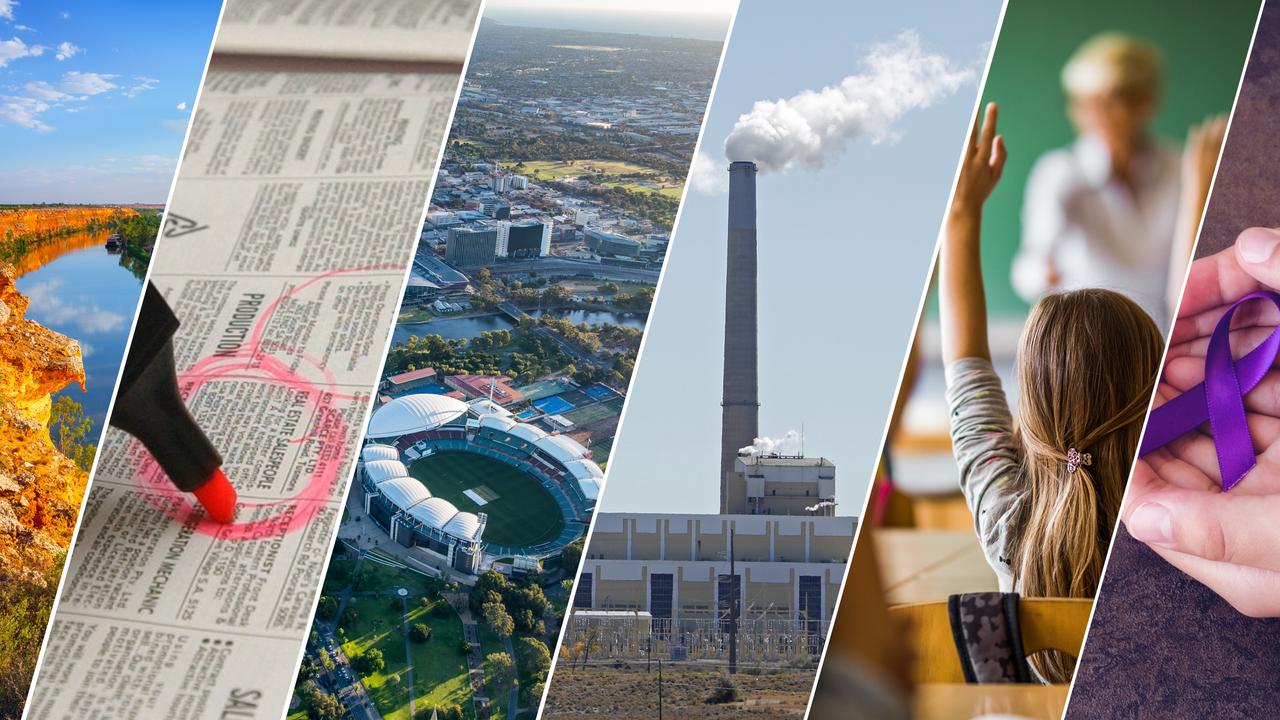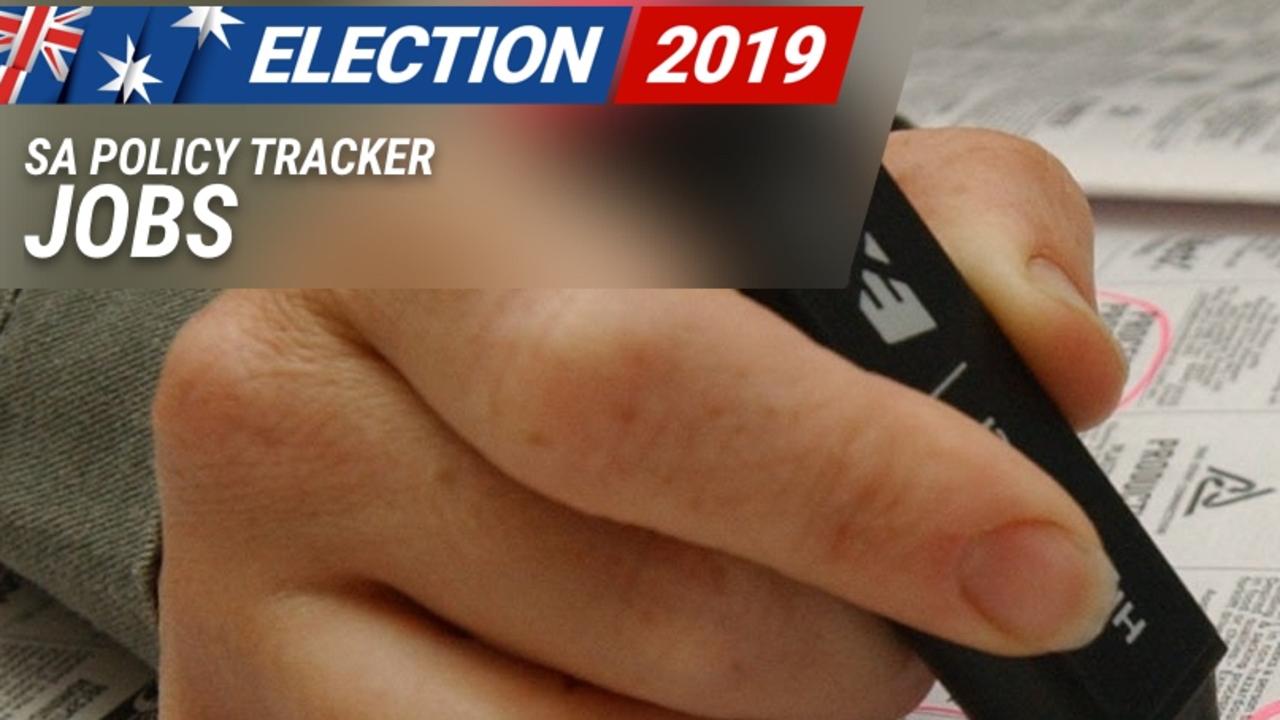Federal Election 2019: Where the parties stand on climate change
The Advertiser’s 2019 Federal Election Policy Tracker is putting the policies, not the politicians, first. Find out what the major stakeholders are saying, and where the major parties stand, on climate change.
SA Policy Tracker
Don't miss out on the headlines from SA Policy Tracker. Followed categories will be added to My News.
Australians are already experiencing climate change. We’re struggling to deal with the consequences of one degree of warming, including more frequent and extreme heatwaves, bushfires, droughts, storms and floods.
Living in a warming world is proving to be hazardous to our health, our economy and our way of life.
The Paris Agreement calls for nations to unite behind a plan to keep warming within 1.5C because that will be bad enough, two degrees is far worse, and warmer still is unthinkable.
Australia has committed to reduce emissions by 26 to 28 per cent below 2005 levels by 2030. The target is economy wide, meaning that Australia must tackle emissions from all sectors including electricity, transport, industry, agriculture, waste and land use. The Morrison Government’s own data shows carbon pollution levels have been rising since the election of Tony Abbott as Prime Minister, and emissions will continue to rise all the way to 2030.
WHAT THE STAKEHOLDERS SAY
Flinders University Professor Corey Bradshaw
Professor Bradsahw says limiting global warming to 1.5 degrees would make a “massive” difference in SA. “In South Australia we see that even under modest warming scenarios, half of our wheat growing capacity is gone by the end of century. Then we stand to lose our mangroves and our seaweed diversity, which are the basis of our marine ecosystem, so all the fish that we eat and all the aquaculture we do is pretty much dependent on these underwater forests.”
Adelaide University Professor Seth Westra
Professor Westra says SA has an opportunity to use the threat of climate change to be a world-leader in methods to tackle the problem. “We are already the driest state in the driest continent, we have among the highest needs to innovate,” he said.
“We have to be clever, we have to innovate our way through this challenge – and I think we can. Often innovation and invention comes in the face of having to overcome obstacles.”
Climate Council’s Head of Research, Dr Martin Rice
“Labor’s policies will boost the renewables sector and are significantly better than the Coalition’s when it comes to addressing climate change”.
WHAT THE PARTIES SAY
COALITION
The Morrison Government’s Energy Plan will deliver affordable, reliable and sustainable energy for Australian households and businesses. The Morrison Government has given the green light to the Snowy 2.0 project by committing to a $1.4 billion equity injection. The project will firm up intermittent renewable energy by bringing 2000 megawatts (MW) of new renewable pumped hydro capacity into the system that will provide up to 175 hours of storage which can meet the peak demand of up to 500,000 homes.
UPDATE:
The Liberals have committed $203m to incentivise recycling, clean up waterways, protect native animals and tackle littering.
LABOR
Labor’s plan will tackle climate change to keep the economy growing by:
■ Investing in renewable energy and batteries to grow jobs and cut power bills
■ Boosting clean transport and infrastructure
■ Working in partnership with business to help bring down pollution
■ Supporting trade exposed industries to keep Australian businesses competitive
Helping the land sector to cut pollution while giving farmers and the forestry industry new opportunities to earn income.
UPDATE: Labor announced a $75m renewables jobs and training policy.
UPDATE: Labor leader Bill Shorten has announced a $1 billion package for new programs to tackle “the extinction crisis, cut single-use plastics, protect our beaches and coastlines, clean up the nation’s rivers, double the number of indigenous Rangers caring for country, and protect the Great Barrier Reef”.
THE GREENS
The 2018 report on climate change painted a harrowing picture of the importance of acting on climate change and phasing out fossil fuels. We can no longer look away from the impact we are having on our planet. We need to put a stop to any new coal, oil or gas mines or wells and work towards a renewable future – that means stopping new coal mines like Adani, and protecting the Great Australian Bight from oil and gas drilling. We need to phase out of fossil fuels and transition into renewable future. The Greens want a 100% renewable energy target and to achieve zero emissions by 2040. South Australia can be leader in clean green power and industry, but with investment and a renewable powered jobs. Like the steelworks in Whyalla, green powered industry means SA can build green, clean manufacturing jobs, and become an industry super power that good for jobs and the climate.
CENTRE ALLIANCE
Centre Alliance supports transparency in the marketplace (e.g. applications that show petrol prices) and strong ACCC oversight to minimise price gouging by retailers.
THE AUSTRALIAN CONSERVATIVES
Climate change is a dangerous UN cult which is a nonsense promoted by the United Nations to ultimately give it more power and redistribute global wealth. We are not disputing the fact that the climate is changing because it’s always been changing but there is no statistical evidence that man’s carbon dioxide emissions are driving climate change. Nothing we do to mitigate climate change can make any appreciable difference to the world’s climate. The Australian Conservative Party advocates scrapping all renewable energy subsidies and pulling out of the Paris Climate Agreement.
THE ADVERTISER SAYS
Climate change is already shaping up as one of the major defining issues of this campaign. At one end of the political spectrum, The Greens want the greatest cuts to emissions (63 to 82 per cent by 2030, falling to net zero by 2040).
They would immediately ban new fossil fuel mines, including Adani, and replace coal with a renewable hydrogen export industry, making the switch to 100 per cent renewable by 2030. And Australia would once again have a price on carbon.
At the other, Cory Bernardi’s Australian Conservatives party does not support any renewable energy target and would withdraw from the Paris Climate Accord. They don’t understand that Australia must participate in the global effort to reduce greenhouse emissions and avert a climate catastrophe.
The Liberal Party believes we have “an obligation to protect our environment for future generations” provided there’s no harm done to our economy and future job prospects. So they’re going for the bare minimum global emissions target of 26 to 28 per cent below 2005 levels by 2030 and happily borrowing Kyoto credits, earned under the previous Labor Government, to get them over the line.
But on most fronts Labor is well ahead of the Libs on climate policy, going for greater cuts to emissions (45 per cent below 2005 levels by 2030 and net zero by 2050).
Renewables will make up 50 per cent of the energy mix by 2050.
The $10 billion investment in the Clean Energy Finance Corporation makes the Libs’ $2 billion Climate Solutions Fund look a little small.
Interestingly Centre Alliance would have us “implement an efficient emissions trading scheme based on the Frontier Economics scheme”, as well as an Emissions Intensity Scheme and our own brand of California’s vehicle emissions standards. They say Australia must stick to the Paris agreement and offer a “smart energy mix that provides affordable and reliable baseload power and electricity grid stability”, whatever that means. Their policy positions are light on detail but they acknowledge that “climate change is real and poses a huge challenge for our environment and our economic future”. The Advertiser agrees and hopes our politicians will rise to the challenge. - Clare Peddie, science reporter



